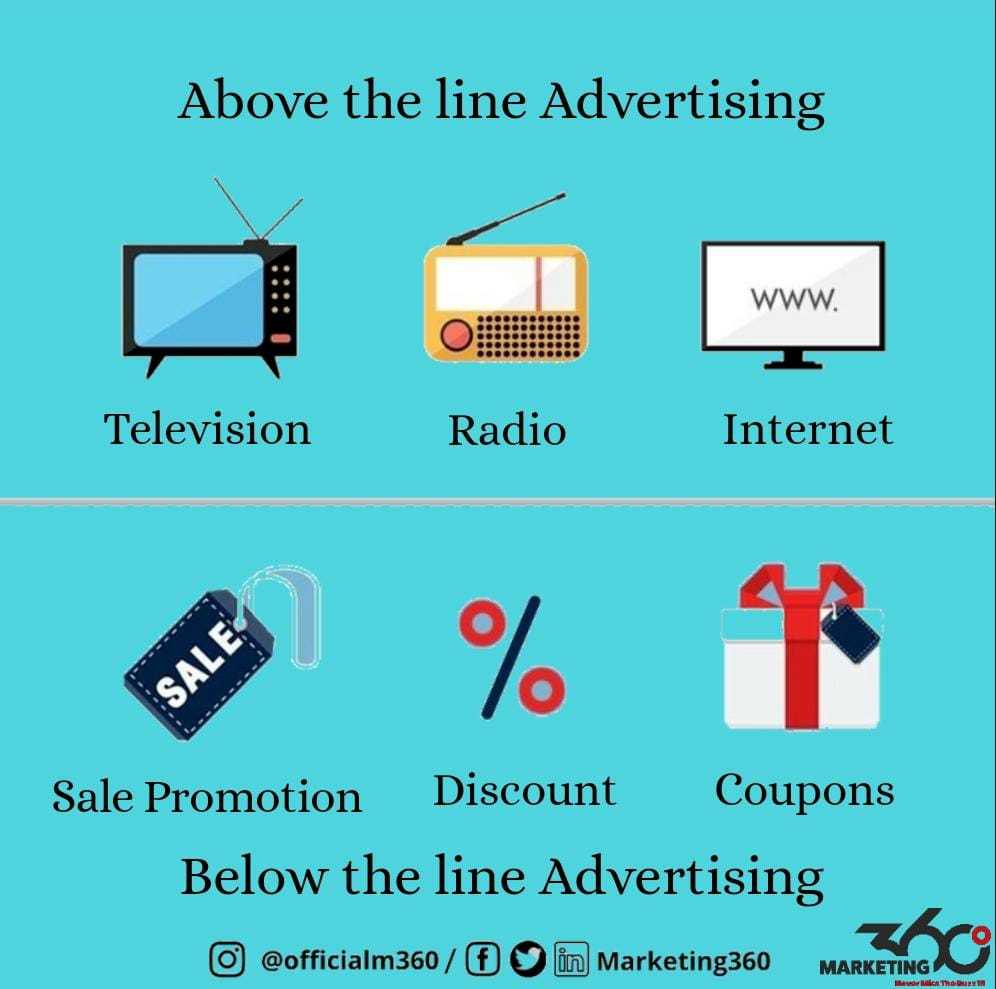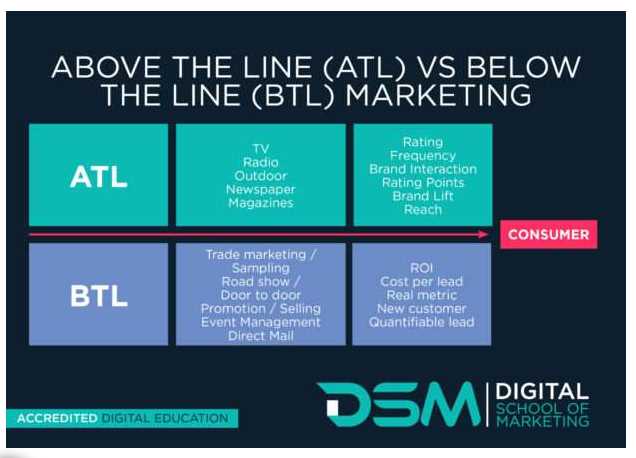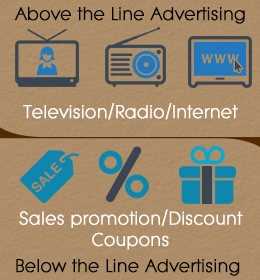What is Below-the-Line Advertising?

Below-the-line advertising refers to a marketing strategy that focuses on targeted, direct communication with potential customers. Unlike traditional advertising methods that rely on mass media channels such as television, radio, and print, below-the-line advertising utilizes more personalized and interactive approaches to reach its target audience.
This type of advertising is often used to create a direct response from customers, encourage engagement, and build relationships. It aims to generate immediate action or feedback from the target audience, such as making a purchase, signing up for a newsletter, or participating in a contest or promotion.
Below-the-line advertising methods can include various tactics such as email marketing, direct mail, telemarketing, social media marketing, search engine marketing, event marketing, and public relations. These methods allow businesses to communicate directly with their target audience, tailor their messages to specific segments, and measure the effectiveness of their campaigns more accurately.
One of the key advantages of below-the-line advertising is its ability to target specific demographics or customer segments. By using data-driven insights and analytics, businesses can identify their ideal customers and create personalized messages that resonate with them. This targeted approach can result in higher conversion rates and a better return on investment.
Below-the-line advertising is also known for its cost-effectiveness compared to traditional above-the-line advertising methods. Instead of spending large sums on mass media campaigns, businesses can allocate their budgets more efficiently by focusing on specific channels or tactics that are most likely to reach their target audience.
Overall, below-the-line advertising offers a more targeted, personalized, and cost-effective approach to marketing. By leveraging direct communication and interactive tactics, businesses can engage with their customers on a more personal level, drive immediate action, and build long-term relationships.
Definition and Explanation
Below-the-line advertising refers to a marketing strategy that focuses on direct communication with consumers, rather than using traditional mass media channels such as television, radio, or print. It involves targeted and personalized promotional activities that aim to reach a specific audience and generate immediate response or action.
This type of advertising is often used to complement above-the-line advertising efforts, which include mass media advertising. Below-the-line advertising tactics are typically more cost-effective and measurable, allowing marketers to allocate their budgets more efficiently and track the effectiveness of their campaigns.
Below-the-line advertising encompasses a wide range of techniques, including direct mail, email marketing, telemarketing, social media marketing, search engine marketing, event marketing, public relations, and sponsorship. These techniques allow marketers to engage with consumers on a more personal level, tailoring their messages and offers to specific segments or individuals.
One of the key advantages of below-the-line advertising is its ability to generate immediate response or action from consumers. By targeting specific individuals or segments, marketers can deliver highly relevant and compelling messages that encourage consumers to take a desired action, such as making a purchase, signing up for a newsletter, or attending an event.
Furthermore, below-the-line advertising allows marketers to gather valuable data and insights about their target audience. Through techniques such as email marketing or social media marketing, marketers can collect information about consumer preferences, behaviors, and demographics, which can inform future marketing strategies and campaigns.
Overall, below-the-line advertising offers a more targeted and personalized approach to marketing, allowing businesses to connect with their target audience on a deeper level and drive immediate results. By combining below-the-line tactics with above-the-line advertising efforts, marketers can create comprehensive and effective marketing campaigns that maximize their reach and impact.
Use of Below-the-Line Advertising in Marketing
Below-the-line advertising is a marketing strategy that focuses on targeted and personalized communication with potential customers. Unlike above-the-line advertising, which includes mass media channels like television, radio, and print, below-the-line advertising utilizes more direct and interactive methods to reach a specific audience.
Benefits of Below-the-Line Advertising

There are several benefits to using below-the-line advertising in marketing campaigns:
- Targeted Approach: Below-the-line advertising allows marketers to tailor their messages to specific customer segments. By using methods such as direct mail, email marketing, and social media advertising, marketers can reach the right audience with the right message at the right time.
- Cost-Effective: Compared to above-the-line advertising, below-the-line advertising can be more cost-effective. Marketers can choose the channels and methods that best fit their budget, and they can also track the effectiveness of their campaigns more accurately.
- Measurable Results: With below-the-line advertising, marketers can easily measure the results of their campaigns. They can track the number of leads generated, the conversion rate, and the return on investment (ROI). This data allows marketers to make data-driven decisions and optimize their campaigns for better results.
- Personalized Communication: Below-the-line advertising enables marketers to have more personalized and direct communication with their target audience. They can use customer data to create personalized messages and offers, increasing the chances of engagement and conversion.
Examples of Below-the-Line Advertising

Below-the-line advertising encompasses a wide range of methods and channels. Some common examples include:
- Direct Mail: Sending promotional materials, such as brochures or catalogs, directly to customers’ mailboxes.
- Email Marketing: Sending targeted emails to customers with personalized offers and information.
- Social Media Advertising: Running targeted ads on social media platforms to reach specific customer segments.
- Event Marketing: Participating in trade shows, exhibitions, or other events to promote products or services directly to potential customers.
- Content Marketing: Creating and sharing valuable content, such as blog posts or videos, to attract and engage potential customers.
Benefits and Examples
Below-the-line advertising offers several benefits for businesses looking to promote their products or services:
- Targeted Reach: Below-the-line advertising allows businesses to target specific segments of their audience, ensuring that their message reaches the right people. This targeted approach can lead to higher conversion rates and a better return on investment.
- Cost-Effectiveness: Compared to above-the-line advertising, below-the-line advertising methods are often more cost-effective. Businesses can choose from a range of options that suit their budget, such as direct mail, email marketing, or social media advertising.
- Measurable Results: Many below-the-line advertising methods provide measurable results, allowing businesses to track the success of their campaigns. This data can be used to make informed decisions and optimize future marketing efforts.
- Flexibility and Customization: Below-the-line advertising offers businesses the flexibility to customize their campaigns according to their specific goals and target audience. They can choose the right channels, messaging, and creative elements to resonate with their customers.
- Engagement and Interaction: Below-the-line advertising methods often encourage engagement and interaction with the audience. For example, a company may run a contest on social media or send personalized offers via email, creating a sense of involvement and building customer loyalty.
Below-the-line advertising can take various forms, depending on the marketing goals and target audience. Here are a few examples:
- Email Marketing: Sending targeted emails to a list of subscribers, offering promotions, updates, or personalized recommendations.
- Direct Mail: Sending physical mail, such as postcards or catalogs, to a specific group of individuals to promote products or services.
- Social Media Advertising: Running targeted ads on platforms like Facebook, Instagram, or LinkedIn to reach a specific audience based on demographics, interests, or behavior.
- Content Marketing: Creating and distributing valuable content, such as blog posts, videos, or infographics, to attract and engage a target audience.
- Event Marketing: Organizing or sponsoring events, trade shows, or conferences to showcase products or services and interact with potential customers.
These are just a few examples, and businesses can choose the below-the-line advertising methods that align with their marketing objectives and target audience. By utilizing below-the-line advertising, businesses can effectively reach their target audience, drive engagement, and achieve their marketing goals.

Emily Bibb simplifies finance through bestselling books and articles, bridging complex concepts for everyday understanding. Engaging audiences via social media, she shares insights for financial success. Active in seminars and philanthropy, Bibb aims to create a more financially informed society, driven by her passion for empowering others.
